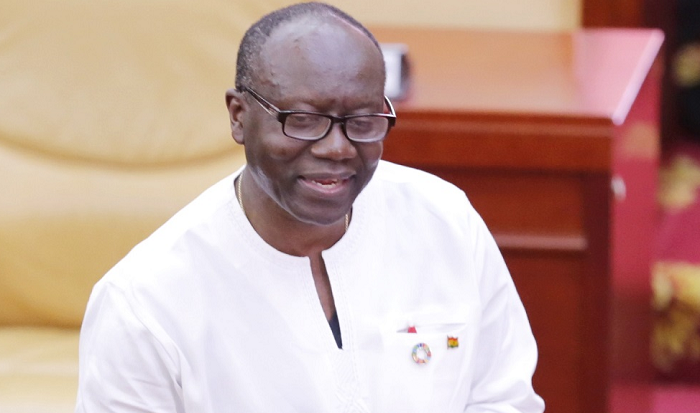Government’s domestic debt securities issuance calendar for the final quarter of 2021 illustrates just how much of a fiscal quandary it is in, but at the same time illustrates strong determination to reel its inordinate public indebtedness back in.
The government is planning to issue a gross amount of GHS21.17 billion – its highest gross domestic debt issuance of cedi-denominated securities in any one quarter to date – but over 95 percent of that amount would be used to rollover maturing obligations while less than 5 percent would be fresh issuance that would be used to finance the 2021 budget.
This is an extraordinarily low level of fresh budgetary financing over one quarter and shows that government is determined to cut its expenditure to whatever quantum of revenues it may gather. Indeed the unusually high quantum of issuance for refinancing of existing debt apparently aims to take advantage of the significant fall in domestic interest rates over the past year and a half, to lower its debt servicing costs by replacing maturing debt with new treasury bills, notes and bonds that offer lower coupon rates. It will also give government the chance to buy back some of its higher priced medium and long term debt on the secondary market of the Ghana Fixed Income Market, again using new debt securities issued at relatively lower coupon rates.
There is still the possibility that government will go ahead with its plans for another sovereign bond issuance on the international capital markets. The plan is to issue a further US$1.5 million in green bonds to fill up its refinancing gap created by its only issuing US$3 billion in Eurobonds earlier this year rather than the US$5 billion it originally planned to take.
An official statement from the Ministry of Finance last week stated that:
The Calendar is developed based on the revised Net Domestic Financing provided in the 2021 Mid-Year Budget, the 2021 domestic maturities, the 2021 Annual Borrowing & Recovery Plan and the 2021-2024 Medium-Term Debt Management Strategy. It indicates the securities that are intended to be issued in respect of Government’s Public Sector Borrowing Requirements for the period October to December 2021.
In addition, the Calendar also takes into consideration Government’s liability management programme, market developments (both domestic and international) and the Treasury & Debt Management objective of lengthening the maturity profile of the public debt.
The amounts stated in the Calendar are indicative, to guide the market and may be revised when transaction adverts are published. Government intends to update the Issuance Calendar on a monthly rolling basis, to reflect a full quarter financing programme.
For the period in question, Government plans to issue a gross amount of GHȼ21,170.00 million, of which GHȼ20,129.30 million is to rollover maturities. The remaining GH¢1,040.70 million is fresh issuance to meet Government’s financing requirements.
In October, government plans to issue GHc3,600 million in 91 day treasury bills, followed by GHc3,900 million in November and GHc3,300 million worth in December making for a total of GHc10,800 million.
With regards to 182 day treasury bills, government plans to issue GHc600 million in October GHc750 million in November and GHc620 million in December, making for a total of GHc1,970 million.
With regards to 364 day treasury notes, government is to issue GHc500 million in October, GHc650 million in November and GHc450 million in December, making for a total of GHc1,600 million.
Government will issue GHJc750 million in two year treasury notes, all of this is December. It will issue two tranches of three year bonds – GHc1,300 million in October and GHc1,000 in November, making for a total of GHc2,300 million. There will be one issuance of six year bonds, of GHc1,800 million, in October; one issuance of GHc1,200 million in seven year bonds, in December; and one issuance of GHc1,200 million in 10 year bonds, this to be done in November.
All this translates to total issuances of GHc7,800 million in October, GHc7,600 million in November and GHc5,870 million in December.
The huge dominance of 91 day issuances is made necessary by the very structure of Ghana’s public domestic debt but government’s heavy reliance on short term securities issuance is also guided by its desire to lower its debt financing costs as the steep yield curve for government securities enables it to price the shortest tenured ones at barely 12 percent, but still offer up to 19 percent for its longer tenured bonds. The snag though is that with the Ghana Fixed Income Market enjoying more liquidity and trading volumes than ever before, institutional investors are going for the longer tenured securities without having to bother about liquidity concerns, since those securities are now easily tradable on the secondary market.
All this means government may struggle to sell all its shortest tenured issuances during the fourth quarter just like it has struggled for much of the year so far.
Per this calendar, Government aims to build benchmark bonds through the issuance of instruments as follows:
i. the 91-day and 182-day will be issued weekly;
ii. the 364-day bill will be issued bi-weekly also through the primary auction with settlement being the transaction date plus one working day;
iii. securities of 2-year up to 10-year will be issued through the book-building method; and
iv. consistent with the MTDS, Government may announce tap-ins/reopening of other existing instruments depending on market conditions.
Government says it expects that this October to December 2021 Calendar meets the requirements of market participants, but experience so far this year puts those expectations into question.
Goldstreetbusiness





